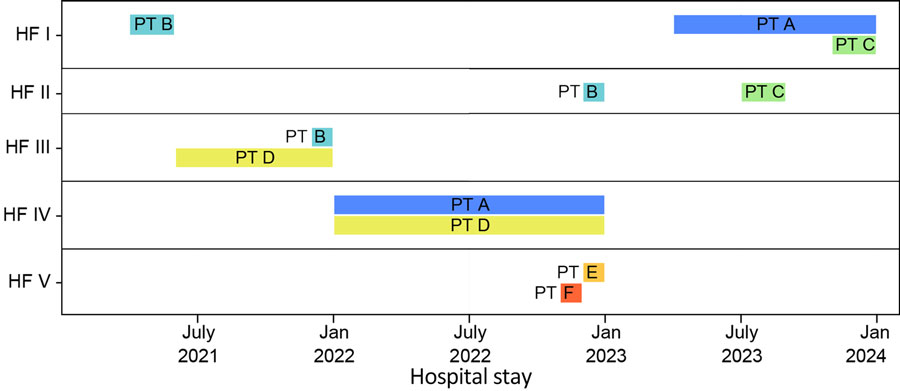Volume 31, Supplement—May 2025
SUPPLEMENT ISSUE
Supplement
Integrating Genomic Data into Public Health Surveillance for Multidrug-Resistant Organisms, Washington, USA
Figure 2

Figure 2. Timeline showing overlap of patients with Klebsiella pneumoniae carbapenemase–producing K. pneumoniae infection in healthcare facilities in Washington, USA, as part of study of integrating genomic data into public health surveillance for multidrug-resistant organisms. PTs A, B, and C stayed in HF I. PT A might have overlapped with PT C in HF I in 2023; PT B stayed in HF I in 2021. PTs B and C both stayed in HF II but at different times, in 2022 and in 2023. PT D stayed at HF III in 2021, where an overlap with PT B might have occurred, and in 2022, PT D might have overlapped with PT A in HF IV. PTs E and F who had stayed in HF V could also be related to this outbreak. HF, health facility; PT, patient.
1These first authors contributed equally to this article.